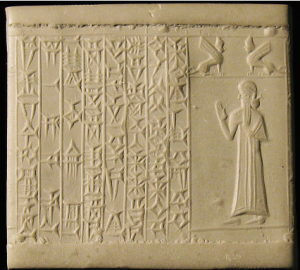
First Kassite Style seal of Tunamisah, in chalcedony. (Courtesy of The Metropolitan Museum of Art, New York, NY)
BASOR No. 376, Novemberarticle, “Men, Women, Eunuchs, Etc.: Visualities of Gendered Identities in Kassite Babylonian Seals (ca. 1470–1155 B.C.),” by Serdar Yalçın (Columbia University).
Scholars have extensively investigated ancient Mesopotamian cylinder seals in terms of their iconographic and stylistic qualities. This article concentrates on the question of whether and how gender, as an important component of personal identity, found expression in the material, visual, and textual aspects of Babylonian cylinder seals of the Kassite period, a relatively understudied era of Mesopotamian history. Like any other society, ancient Mesopotamia had various complex gender categories, which included, in addition to normative male and female groups, other genders, such as eunuchs and homosexuals. It is argued here that the gender of a seal owner and the nature of the relations between different genders in Kassite-era Babylonian society were communicated through the seal image and labels, as well as through the use of cylinder stones.
